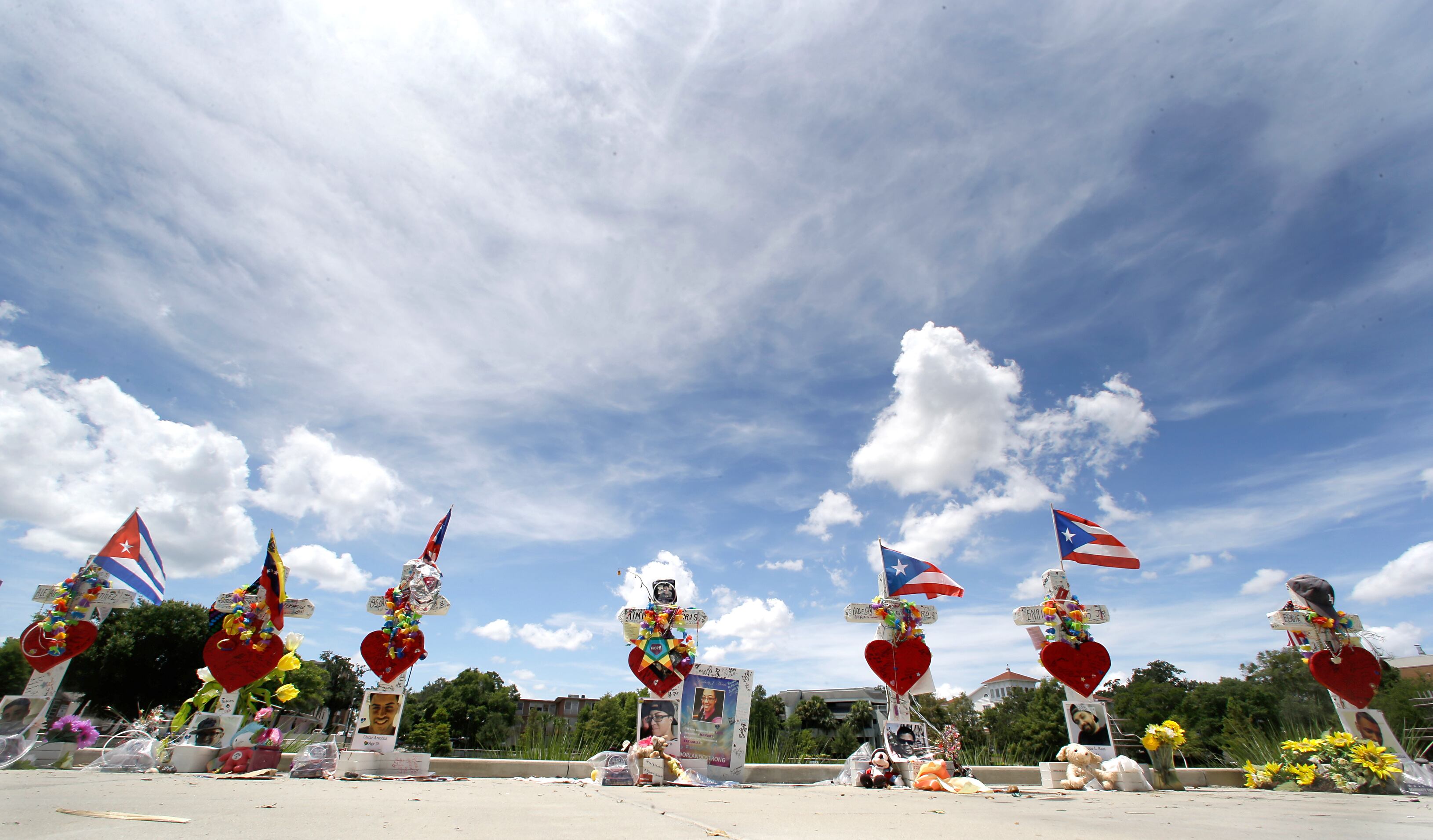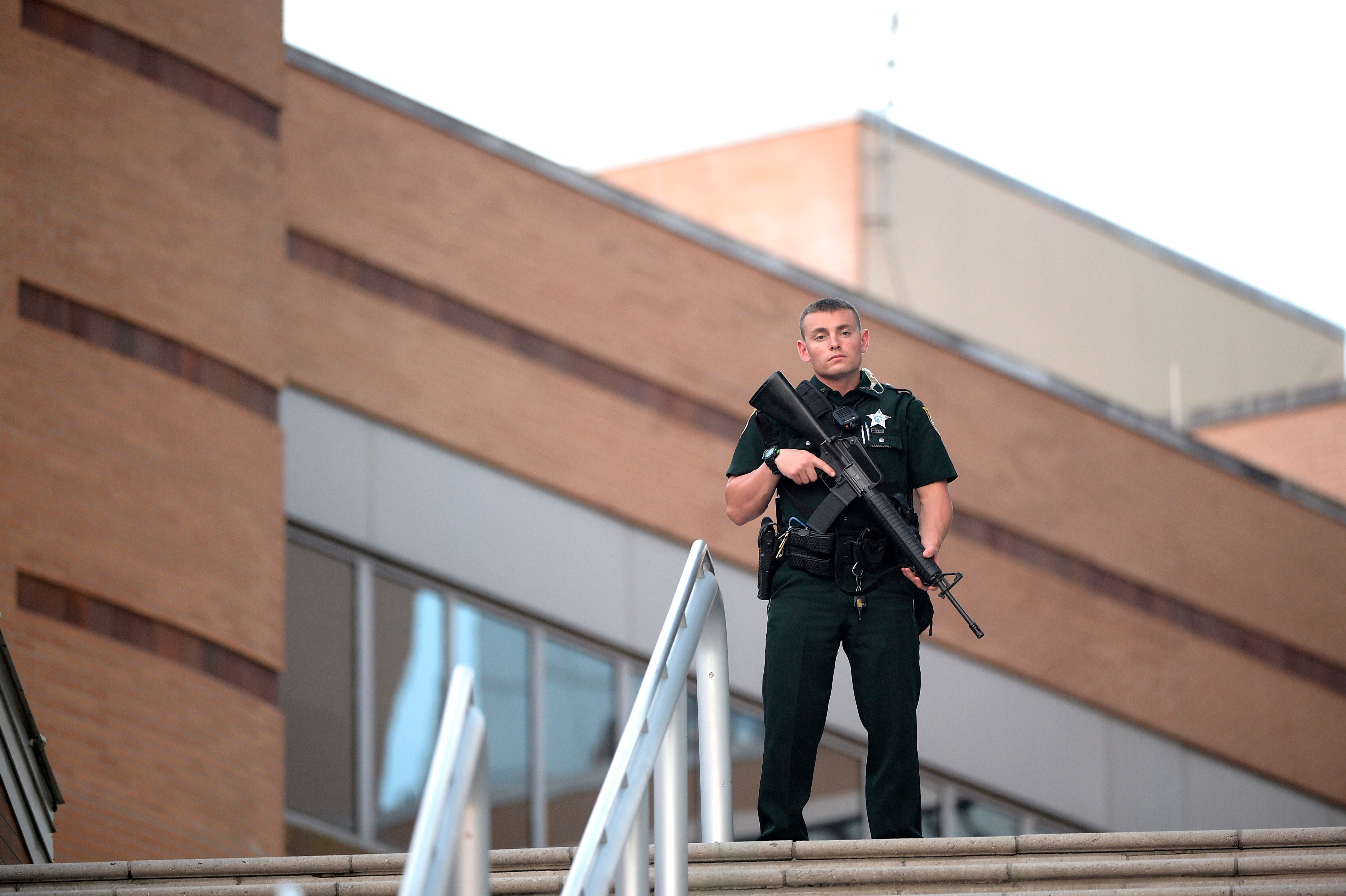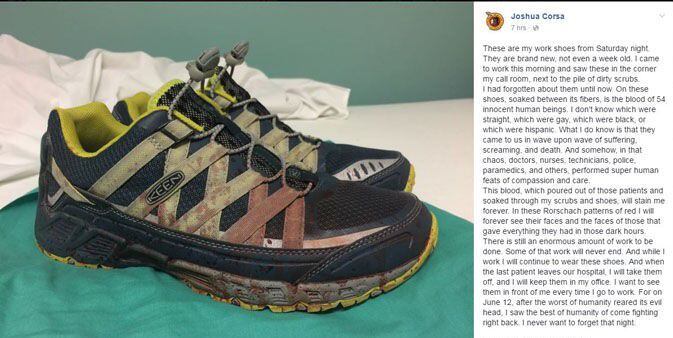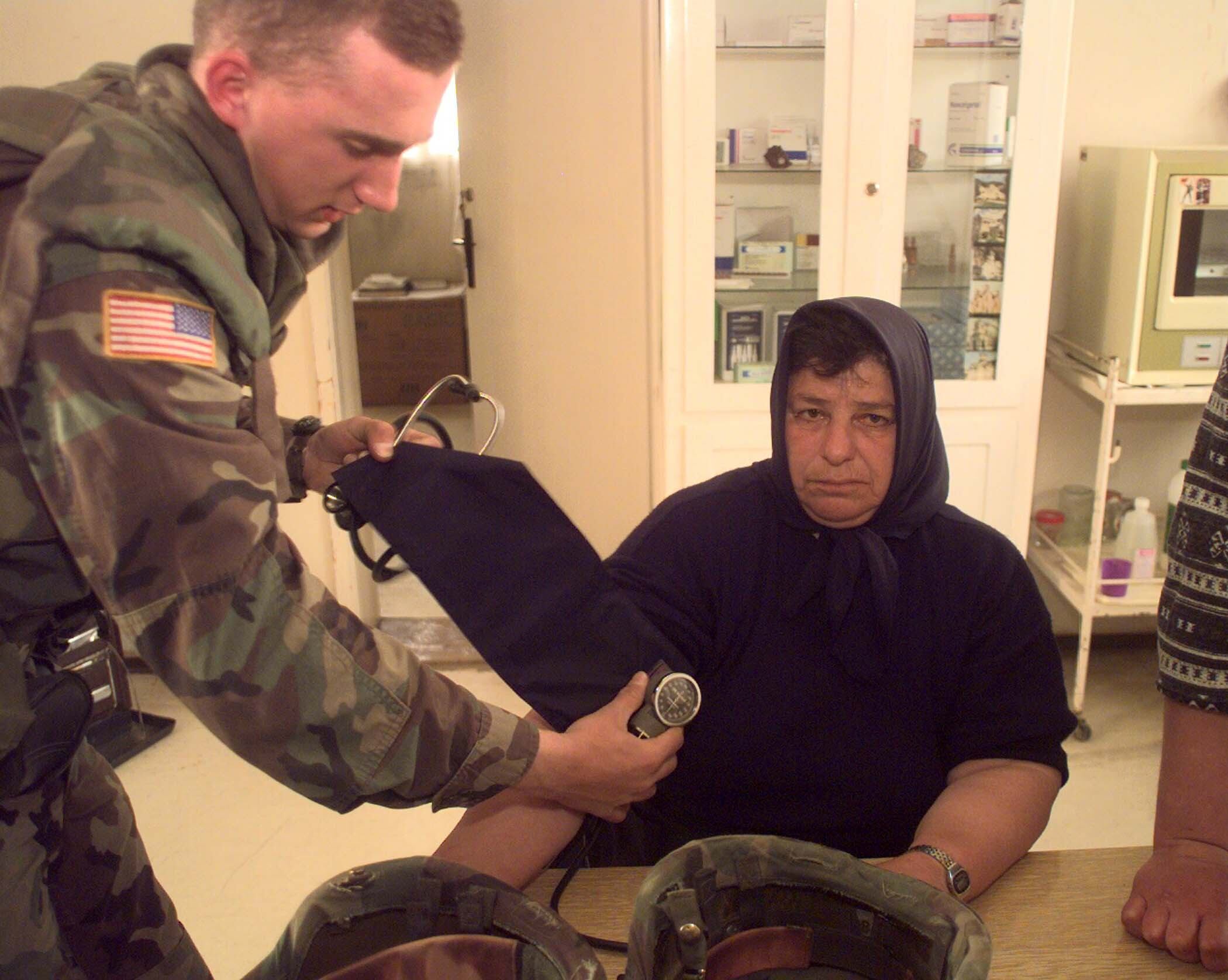Bad news, sure, but not out of the ordinary.
Dr. Joshua Corsa, a surgical resident at the Orlando Regional Medical Center in Florida, recalled receiving a page from his boss in the early morning June 12, a message announcing an active shooter, with up to three victims who would require treatment.
“And like most urban trauma centers in this country, that’s not particularly unusual,” Corsa, who served as a medic in the Army Reserve and National Guard, told Army Times. “We’ve had five, six people shot in a drive-by on a regular basis. Not regular, but it’s not uncommon. Maybe every six months or so. I didn’t think much of it, so I started walking toward the trauma bay.”
Then came more details of what would become the largest mass shooting in modern U.S. history, one taking place at a nightclub just a few blocks down the street. Corsa, expecting at least a few minutes to pass as ambulances reached the hospital, began his walk to the trauma center.

Then, another page: Patients arriving. Now.
He broke into a run. When he reached his destination, two critically injured patients were already there. Corsa began setting into his role assessing patients and directing traffic — the “pit boss,” a co-worker called him — when he happened to look up toward the trauma bay.
“I saw literally a truckload, a pickup truck drop off four more patients,” he said. “They started rolling toward me. It just didn’t stop after that.”
Air Force Reserve Maj. (Dr.) Charles Hunley, a critical care specialist at the center, recalled a similar scene.
“I walked into the trauma bay and saw people on ambulance stretchers without anywhere to go,” said Hunley, a critical care air transport physician with the 920th Rescue Wing out of Florida’s Patrick Air Force Base. “And I had to get airways. I had to intubate the patients. There was nobody there but me and maybe one other person.
“I remember thinking this is what I’d been training for. That this was going to be one of the most memorable nights we would have in a very, very long time, if not ever.”

Organized chaos, military discipline
Hunley went into “military mode,” he said, but his military training wasn’t geared toward treating dozens of incoming civilian casualties. As a “CCAT guy,” he said, his job is to stabilize the wounded in theater and get them to a safe, modern care facility, otherwise known as a Role 4 hospital.
Now, he was at a Role 4 hospital. And the injuries were coming to him.
That meant triage — color-coding those who were already stable, those who needed help, and those who were beyond it. He marshaled staffers to apply tourniquets. He rounded up young internal medicine residents — “They had no idea how to take care of sick people,” he said — and tasked them with monitoring the stable patients.

“I don’t know if that’s been done in the United States other than 9/11 — that many patients, all at once, into a hospital. I can honestly tell you that my military training was invaluable.”
At the time of the shooting, Corsa had been out of the Army for about a decade. He joined the North Carolina Army National Guard in 1997, then moved to the Washington Guard for a span that included eight months in Kosovo with a public affairs detachment. He left as a private first class in 2006, after four years in the Individual Ready Reserve.
His medical training while in service became a springboard to becoming a surgeon. But his advanced skills never overshadowed that foundation.
“That initial training in triage, being a medic, everything since then has really built off that,” he said. “It’s going back to that base ... that the Army had laid, just in terms of a methodical, measured approach to it. Evaluating the patients, triaging them appropriately, staying calm, I think that all stretches back to my initial training in the Army.”
Pushing forward ... and looking back
Forty-nine victims died in the shooting at the Pulse nightclub, including an Army reservist and a former member of the Puerto Rico National Guard. Corsa and Hunley were far from the only ones with military experience to respond: A Marine veteran serving as a bodyguard at the club was credited with saving dozens of lives thanks to his actions as the shooting began, and others at the medical center brought their military experience to the tragedy.
Forty-four victims were seen by hospital personnel, the Los Angeles Times reported. Both doctors saw aspects of their military training in the crisis response.
Corsa: "I’ve told this story a couple of times, I don’t think it’s ever made it into print, but the amount of teamwork we had. I remember in the midst of all this chaos, we had one or two housekeepers, I remember one in particular, and she’s there with her little broom and trash can, and as we’re rolling a patient out, which probably happened every two or three minutes, she’s getting as much trash off the floor as she can, mopping up blood — lots of blood, everywhere. Everyone really did their part — they didn’t do their part, they did their part and then so much more. … To see that level of teamwork, it was something I hadn’t really seen since the military."
Corsa also said he still sees the faces of some of the victims "a few dozen times a day." As time passes, he and Hunley both have dealt with another aspect of military life for many service members: post-traumatic stress.

Along with hospital support and military outreach, help has come from less-expected places. Corsa, a motorcycle rider, said members of the Combat Veterans Motorcycle Association have been critical to his recovery, as have some of the patients he assisted and their families, who often check up on his well-being as he's providing follow-up care.
It's all part of Corsa's personal recovery process. And there's also the matter of the sneakers.
Viral footwear: How not to post
It was supposed to be a simple Facebook statement to his friends — a photo of his blood-soaked sneakers, worn while shooting victims were shuttled around his trauma center, with an accompanying pledge to wear the shoes until the last patient from that night left the hospital. A way to show his resolve to 100 or so Facebook friends who'd been worried about him in the aftermath of the tragedy.
"On these shoes ... is the blood of 54 innocent human beings," Corsa wrote, in part. "This blood, which poured out of those patients and soaked through my scrubs and shoes, will stain me forever. In these Rorschach patterns of red I will forever see their faces and the faces of those that gave everything they had in those dark hours." (You can hear him read the whole piece here.)

When one of his CVMA friends asked to share it, Corsa said, "Sure. Why not?"
"He shared it, and then a couple of other people shared it, and the next morning, I woke up and was actively flabbergasted," Corsa said. "I had never expected it to have the kind of response, the kind of attention. ...
"I did panic, and I took the post down. I thought, ‘Oh my God, this is insane.’ Once it hit 300-some-odd-thousand [shares] I thought, this is not what I wanted. I took it down. I thought about it, I put it up again a couple of days later."
Local media interviewed Corsa about the shoes. He and his famous footwear appeared multiple times on network newscasts. He's still wearing the sneakers, he said in a follow-up email, as a single patient from that night remained hospitalized as of early August.
"The goal was never for it to be about me," he said. "It was to be about us, the city and the victims. … All I did was stand there and give people orders. I’m not the hero, by any stretch."
He had intended to keep the shoes in his office, possibly as a conversation piece as he instructed young residents. He's now considering donating them.
If they do leave Corsa's feet and office, at least one co-worker may not miss them all that much.
"I have to admit, I was pissed at him because he’s my resident," Hunley said, describing his reaction to the viral post. "I was like, ‘Josh, what the hell are you doing?’ And then later, I was like, that’s his way of coping with it.
"I don’t cope with it that way."
The positive message delivered by the post was worth the added attention, Corsa said, crediting the hospital staff for helping him deal with the unexpected media crush.
Still, he said, "I’m not that good with Facebook, obviously, otherwise this post would’ve never gotten out."

Hunley started with the 920th just a few months before the shootings. He called his new unit "one of the best critical care air transport teams in the Air Force" and said he's finally ready to give up what he jokingly called "escaping Orlando" — no matter where his civilian or military career has taken him, he seems to return to the area, where his father retired after his own Air Force career.
And while Hunley's military career continues, Corsa's just restarted: The former enlisted solider is now Capt. Corsa, battalion surgeon with the Florida National Guard's 2nd Battalion, 124th Infantry Regiment.
It was a decision he'd made long before the nightclub shooting, one that took about 18 months to come to fruition, featuring "bureaucracy, triplicate forms and everything else," Corsa said.
It stemmed, he said, from a simple desire to repay what he considers a debt to the Army.
"I looked back at everything we’ve gone through in the past 15 years, and I wasn’t able to play a role in it," he said. " And now I’m a doctor, I’m a surgeon no less, I think I’ve finally got something to give back to the military, which gave me so much. This is my chance to do that."
Kevin Lilley is the features editor of Military Times.




